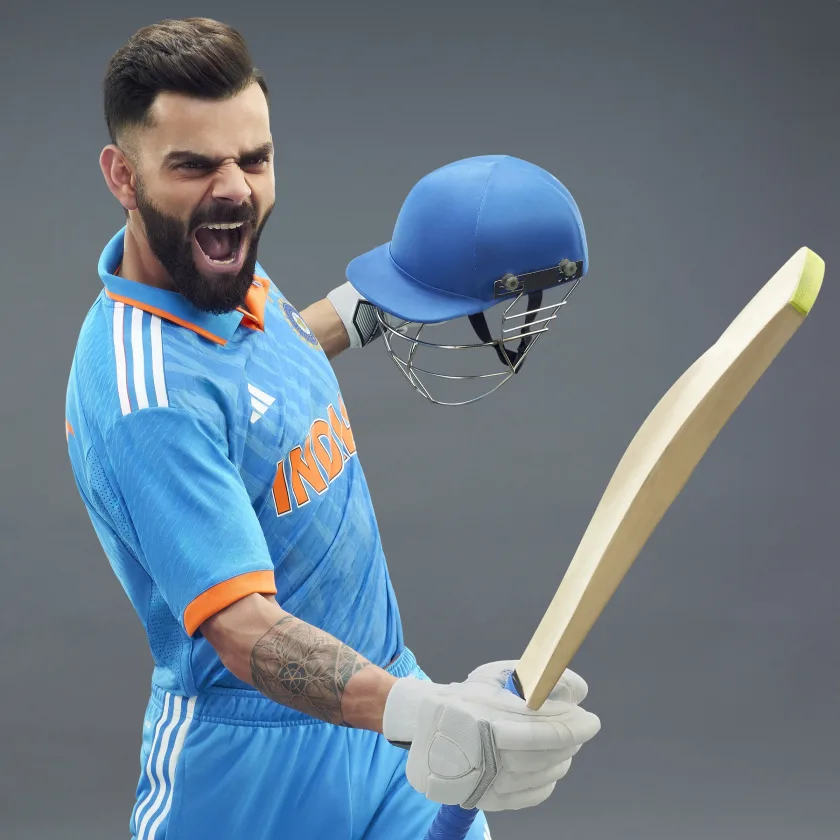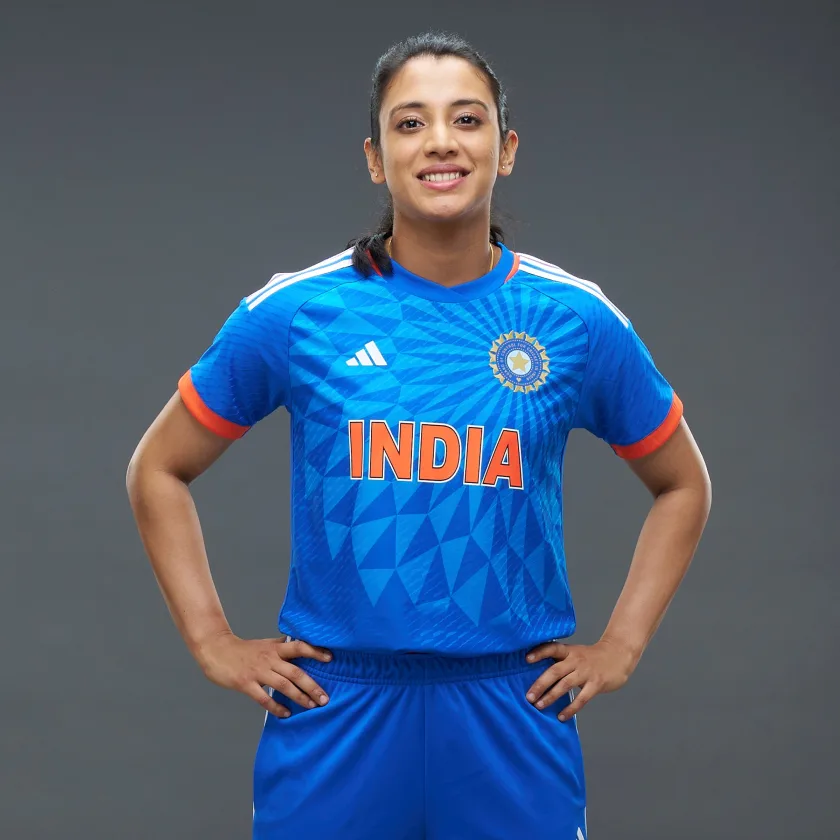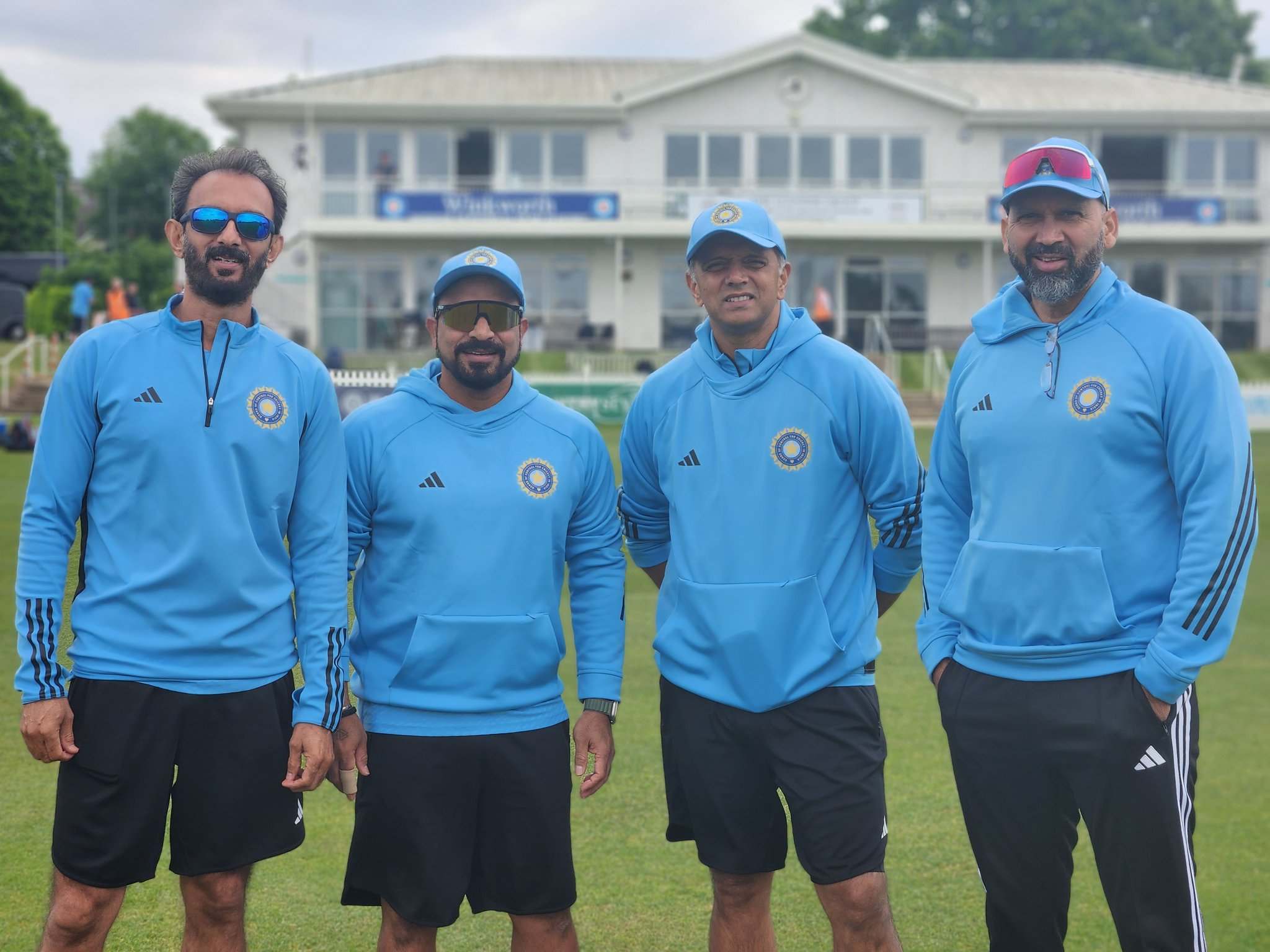When wrestler Sonam Malik clinched the bronze medal by beating China’s Long Jia and when the Indian men’s kabaddi team beat Pakistan 61-14 in the semi-finals, or when the Indian cricket team beat Bangladesh by nine wickets in the semi-finals, the world and India watched with bated breaths.
It is safe to claim that the 19th Asian Games in China’s Hangzhou will go down in the country’s history for more reasons than one.
India, now at her ‘best ever medal tally’ — 107 medals — has beaten her own previous record of 70 secured in the 2018 Jakarta edition.
But aside from the athletes’ stellar performances, another talking point has been their sportswear, for which, Delhi-based designer Aaquib Wani couldn’t be prouder.
He minces no words as he talks about his designs, the role the arts have played in his life, his thoughts on the traditional education systems and shutting out the naysayers.

Building a dream out of design
It was in 2018 that Aaquib started his own venture — Aaquib Wani Design. In 2021 after a host of exciting projects, Aaquib got an offer that set the stage for the illustrious sportswear design career he has built. He was asked to design jerseys for the football club, Real Kashmir FC.
“Since my roots are there, I decided to give it a go,” he shares. As Aaquib takes a walk down memory lane, the events that led him to this opportunity are “surreal” to say the least. But, ‘lucky’ is the last thing he would like to be called.
The 32-year-old is quick to retort that he felt quite the contrary a couple of decades ago, when as a student of Class 11, he realised the notoriety of a society that sets marks and grades as the benchmark for success. “In their eyes, I was a failure and this bothered me.”
As his friends cleared exams and moved on to higher classes, Aaquib felt the disappointment of not being able to join them when he failed twice. It was then that he turned towards music where he found solace.

As he recalls, it helped him deal with failure while being reminiscent of the creative side of his that he’d always been wishing to explore.
As years went by, Aaquib and his guitar found fame in Delhi. His band ‘Phobia’ made frequent appearances at shows, colleges, music festivals and the likes. The national capital had a sweet spot for heavy metal, it seemed.
Always having toyed with the idea of creating something, Aaquib decided to design posters for his up-and-coming band. It would help him touch base with his love for art.
Months spent pouring over Photoshop, Microsoft Paint and Illustrator led him to fall in love with designing — a feat that would one day shape his current portfolio.
In his words, “I’ve always loved creating. Sometimes art, sometimes music, sometimes other things. I simply listened to the creator in me.” And so, when the opportunity to design the Real Kashmir FC jerseys knocked on his door, it was almost like the Universe giving its nod to Aaquib’s dream.
He hasn’t looked back since then.

Where culture is sewn into every fabric
Aaquib’s designs aren’t simply scraps of fabric stitched together, but instead, they are odes to India’s thriving culture. “For instance, the jerseys I designed for the football club [Real Kashmir FC] borrowed inspiration from the traditional pashmina shawl.” He adds that while this was the first time he had integrated cultural motifs into the design, it definitely wasn’t the last.
When Aaquib was asked to design the jerseys for team Rajasthan Royals for the Indian Premier League 2023, he took his ideas a step further. For anyone who looked closely, it was evident that a lot of thought had gone into each stitch.
“We combined block print techniques and fused them with the architecture of Rajasthan’s havelis. For instance, the jaali pattern on windows was used in the design,” he explains but is quick to point out that he isn’t doing something extraordinary.
“I’m reinventing what is already there,” he says.
Yet again in 2023, Aaquib’s ingenuity came to the fore when Adidas approached him to design jerseys for the Indian Cricket Team reflecting the ikkat weaving technique. Incorporating this 19th-century textile-patterning into the designs was almost like paying homage to the heritage he had grown up seeing and loving.

But, as the self-taught designer shares, the design was also meant to reflect the tiger’s stripes. “The animal’s black-on-yellow imprint was reflected in the jersey.”
With great projects comes great responsibility. And Aaquib knows it. When approached by JSW for the sportswear of more than 600 athletes participating at the Asian Games 2023, the task at hand wasn’t going to be an easy one.
“There are multiple processes involved — choosing fabrics, deciding base silhouettes, keeping the players comfort and the final fit in mind, among others. They are athletes and so performance tops design,” he explains.
While detailing his creative process with the Hindustan Times, Aaquib said his first step was to refer to textile designer Aditi Ranjan’s book ‘Handmade in India’.
“It’s from here that I made a depository of motifs,” he added. “I got bagh from Madhya Pradesh, marapani wood carving from Kerala, bamboo basketry from Chhattisgarh, Nagaland skirt patterns, Misoram’s kwapusial, telia rumal from Arunachal Pradesh, Ladakhi psug dgan rugs. I also got paintings applique from Madurai, gamucha from Assam, Sanchi paper cut from Uttar Pradesh, paper mâché from Kashmir, motifs in Tibetan carpets… and the list goes on!”
Aaquib further shared that while he wasn’t “trying to be a torchbearer for Indian handicrafts”, he wanted to uphold the idea of giving an apt representation of our rich history.
His work was commended by Parth Jindal, founder and director of JSW Sports, who spoke of how Aaquib’s work was a feather in India’s cap. “Over the years, India has made immense strides in the field of sports, and now the whole world is looking at us as a force to reckon with. It has been our mission to leave no stone unturned to help India become a sporting nation that competes and wins with the best. It gives us immense pride and pleasure that close to 900 of our athletes and staff will don an Indian performance wear brand in the biggest sporting event of the year,” noted Jindal.
For Aaquib however, every sleepless night and every tough choice dissolves as he watches athletes wearing his designs win both hearts and medals as they march onto the pitch.
Edited by Padmashree Pande
No comments:
Post a Comment